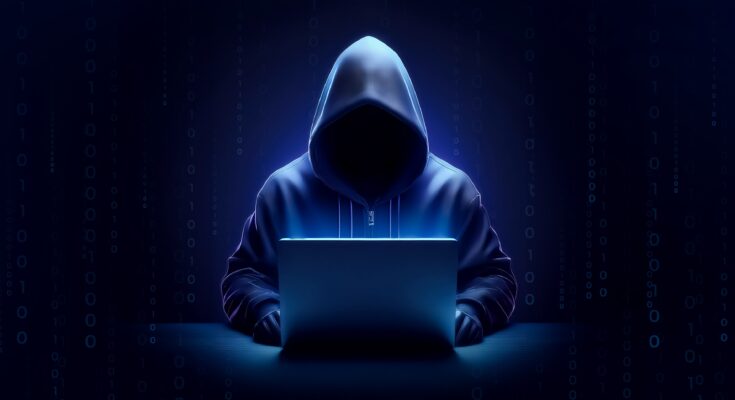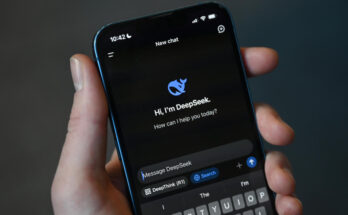Cyberattacks, including ransomware and online fraud, are increasing globally, with the cost expected to reach $13.82 trillion by 2028. Advanced techniques like malware and multi-vector attacks pose additional risks.
This article debunks common cybersecurity myths, highlighting the importance of understanding and addressing these risks to protect individuals and organizations from evolving cyber threats, despite their seemingly obvious nature.
The Top 7 Myths and Facts About Cybersecurity
Myth 1: Cybercriminals Only Target Big Businesses
Cyberattacks, occurring every 39 seconds, are escalating through phishing scams, viruses, spyware, and keyloggers, stealing sensitive information and accessing personal accounts or devices.
Botnets are growing threats where hackers control computers for cryptocurrency mining without the owner’s knowledge, targeting personal users due to a lack of security measures to detect or stop attacks.
Myth 2: Phishing Scams Are Simple to Identify
Phishing involves five steps: target selection, information gathering, email creation, sending, and improvement. AI tools like ChatGPT automate these steps, with 60% of participants falling for AI-generated scams.
Hackers employ novel techniques, including QR phishing, SIM switching, and social engineering, in addition to phishing emails, to obtain personal information, including bank account details.
Myth 3: Any attempt at hacking is thwarted by a strong password.
The most used password, according to cybersecurity companies NordPass and NordStellar, is “123456,” which hackers can break in less than a second. Mailsuite’s data revealed the most hacked pop culture passwords in 2024, with “Superman” being the riskiest, followed by “Blink 182” and “Batman.”
Beyond Identity found Gen Z has weaker password habits than other generations, with Gen X and Millennials changing passwords annually. Strong passwords should have at least eight characters, be unique, and avoid common words. However, phishing, data breaches, and social engineering can bypass them.
To enhance security, consider adding multi-factor authentication, which requires users to verify their identity with a password, one-time code, or biometric authentication. This combination, combined with passwords, makes it harder for hackers to access data and networks, while a password manager helps create unique passwords for each account.
Myth 4: Firewalls and antivirus software are sufficient for protection.
Firewalls and antivirus software are crucial for cybersecurity, but they require frequent upgrades and maintenance. Furthermore, as assaults get more sophisticated, these technologies might not be sufficient on their own.
Antivirus software can assist with common threats, but it is unable to prevent contemporary malware, which is constantly evolving and requires the assistance of more powerful protection systems. Furthermore, sophisticated threats are a challenge for next-generation firewalls (NGFW).
Myth 5: The IT Department Is Responsible for Cybersecurity
Previously, cybersecurity was primarily handled by the IT department. However, with increasingly complex threats and social engineering tactics, everyone must stay alert and adhere to safety practices, as mistakes like phishing scams can cause significant security issues.
Organizations should foster a cybersecurity culture through regular training and clear rules, emphasizing awareness, risk management, and common sense over technical skills for effective protection against threats.
Myth 6: Only external sources may cause cyberattacks
According to a Palo Alto Networks Unit 42 research study, 75% of attacks occur within enterprises, despite the media’s tendency to highlight external hackers. Partners, contractors, or employees who have access to private information may intentionally or inadvertently trigger breaches.
Companies should establish stringent access controls, often check permits, and keep an eye out for odd activities to avoid this. But it’s crucial to handle these risks carefully to avoid inciting mistrust or over-observing staff.
Myth 7: Wi-Fi networks in public places are safe.
A Forbes Advisor survey revealed that 21% of remote workers use public Wi-Fi for work, but 43% have experienced security issues, making it easier for hackers to steal personal data or infect devices with malware.
The pandemic has increased internal risks and vulnerability to cyberattacks due to poor cybersecurity habits from remote work. To stay safe, avoid sensitive information, use VPNs, check website security, and use personal hotspots or mobile data instead of unsecured networks.
The Bottom Line
The top 7 cybersecurity myths often lead to misunderstandings about protecting personal or business data, as relying solely on strong passwords or antivirus software is not sufficient for security.
The lack of risk awareness is a major cybersecurity issue. More attention should be paid to human behavior and education, according to recent studies. To remain safe from changing threats, organizations need to evaluate risks, develop security policies, train employees, and upgrade security often.



